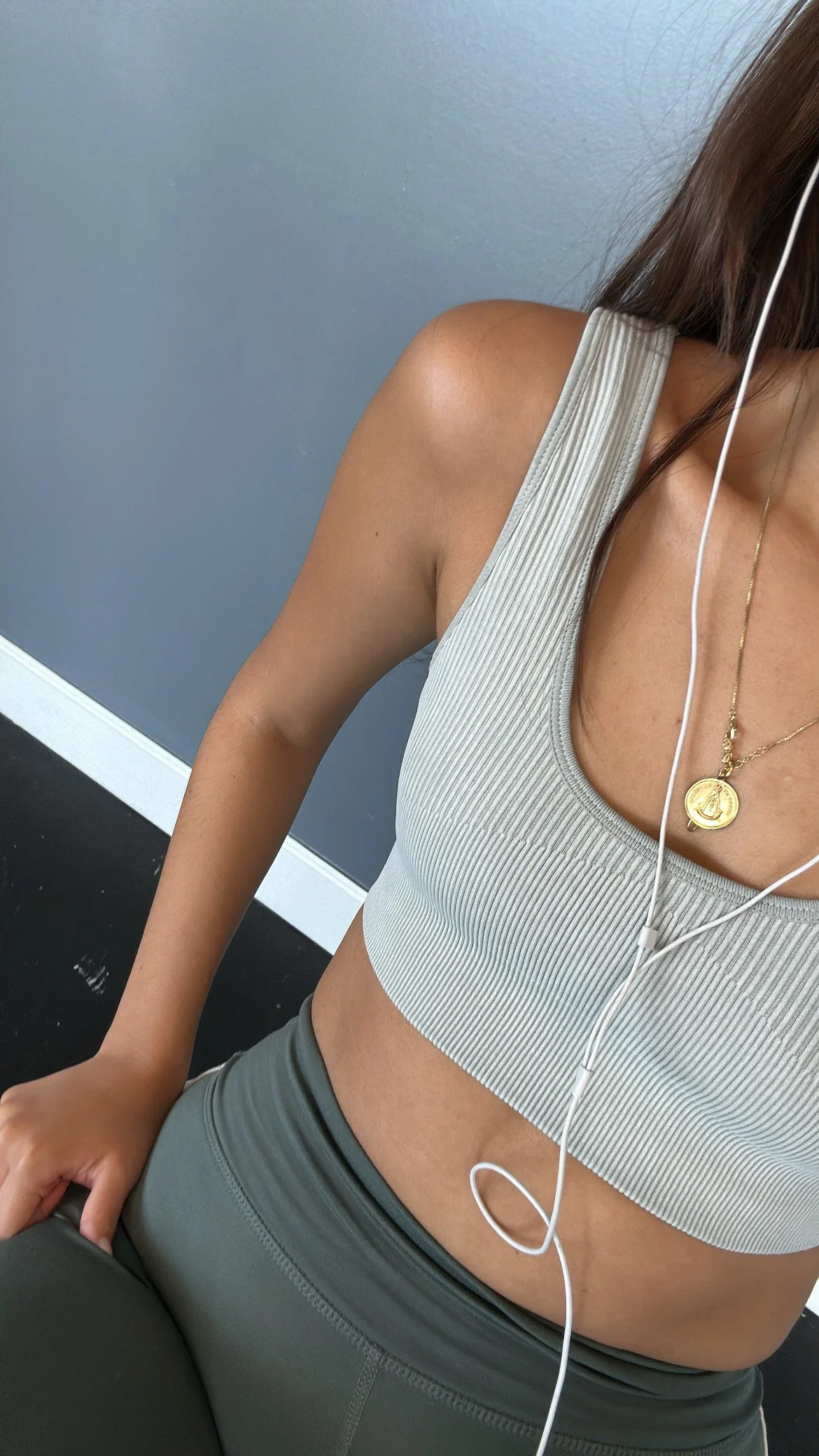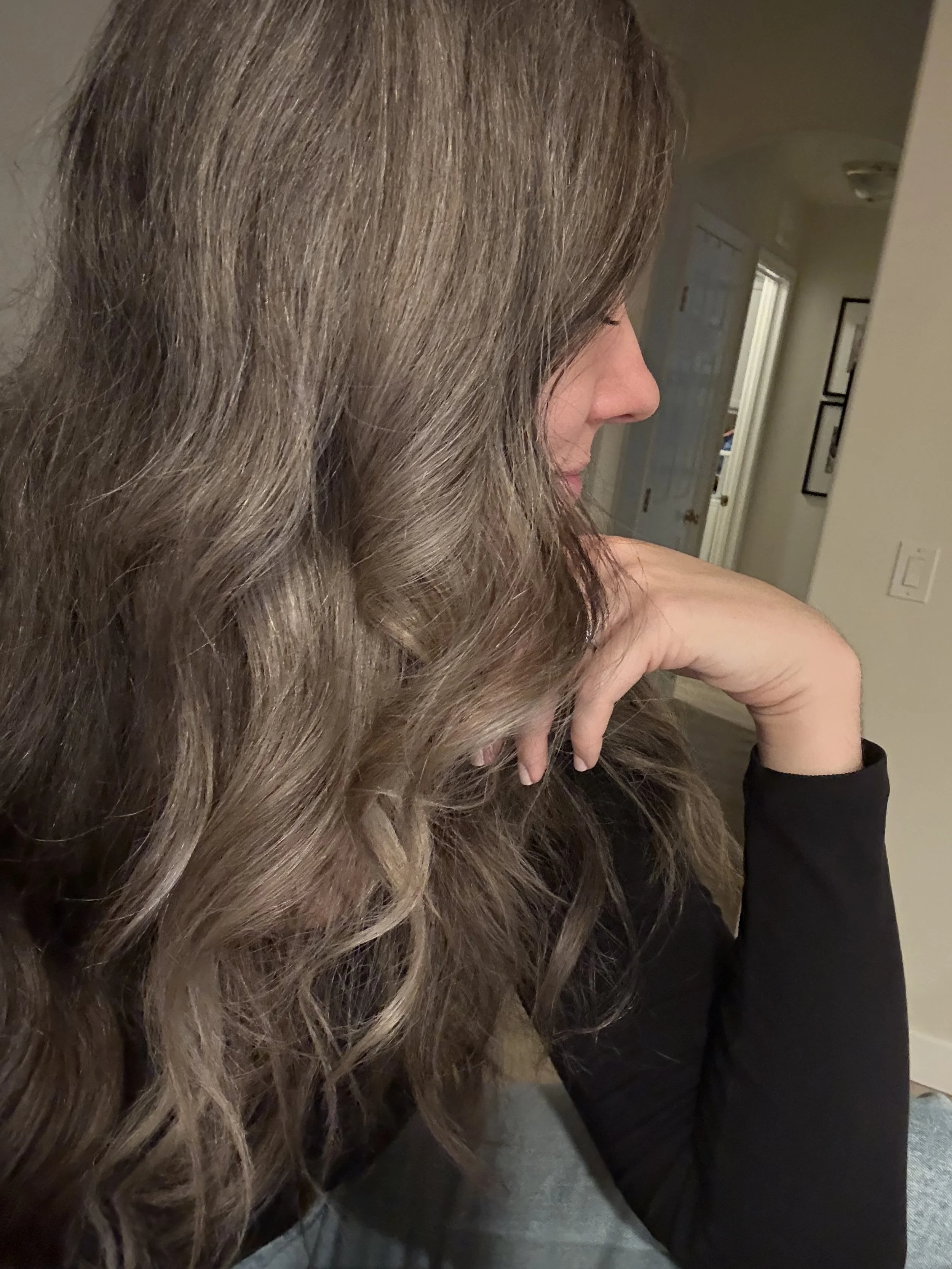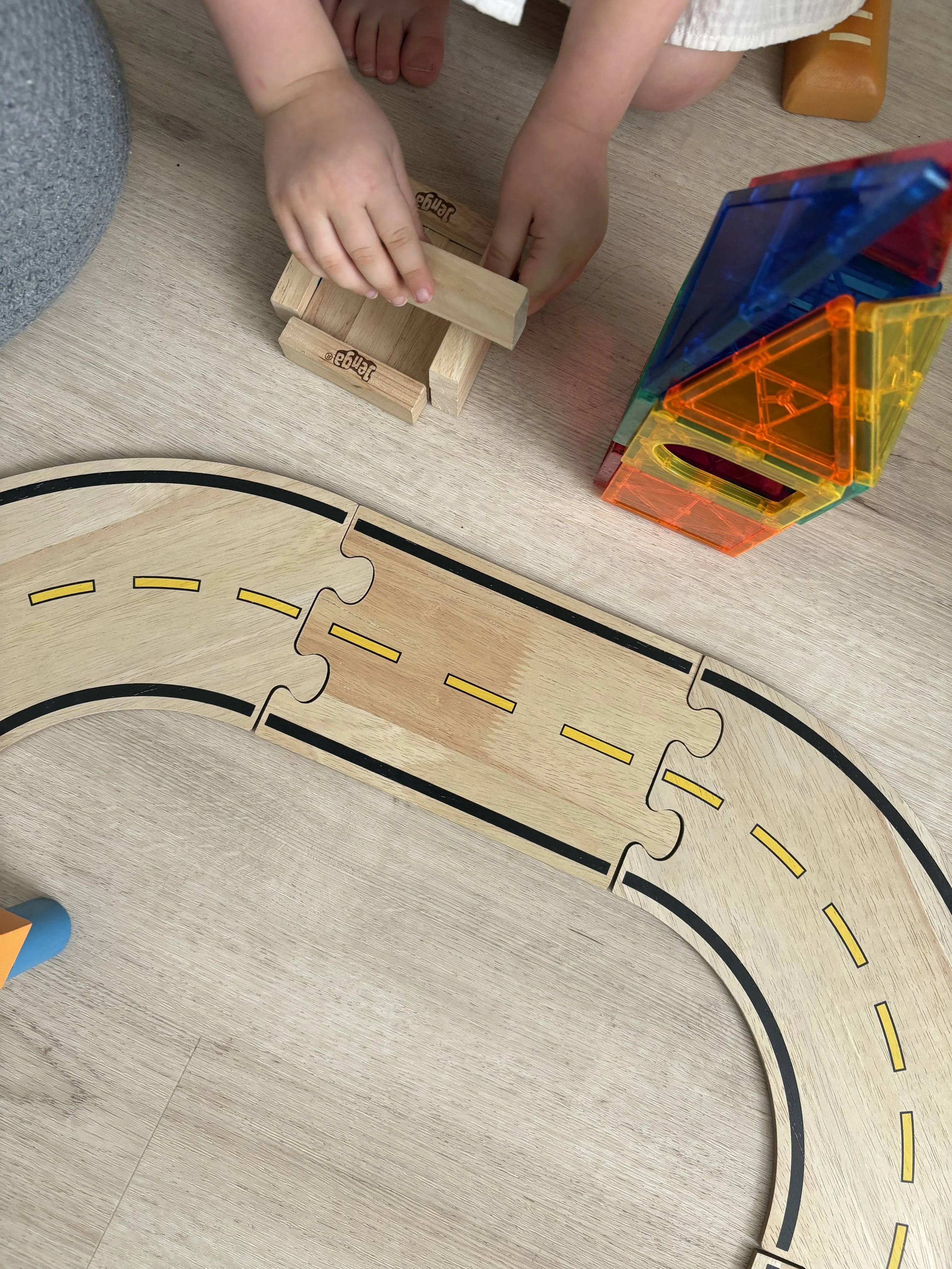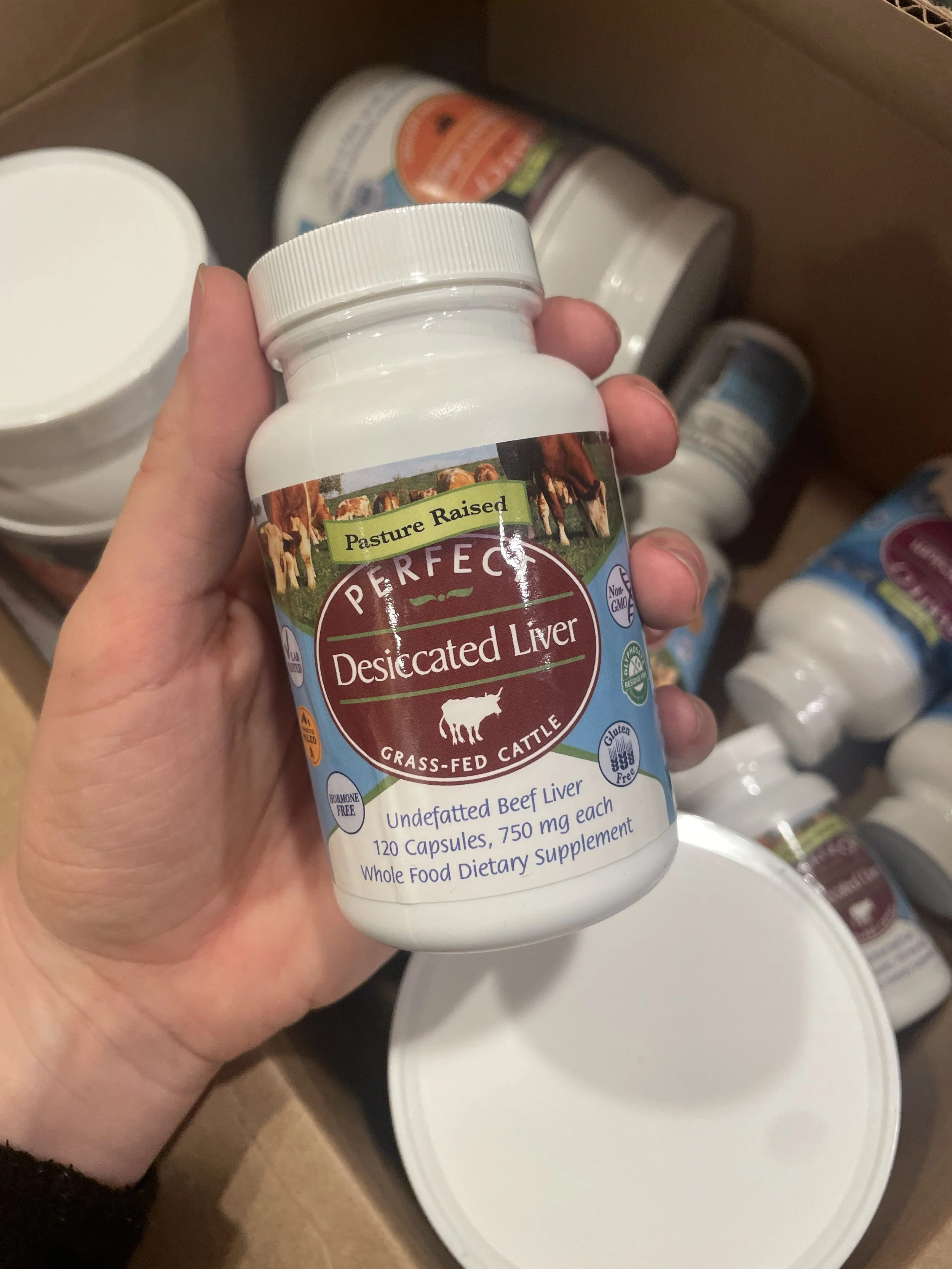Red Light Therapy 101 (And My Favorite Device to Use!)
Red Light Therapy
Is it just the latest wellness trend? or is it backed by science? 🏮
Curious about infrared red light therapy? Or maybe confused? Recently, near-infrared light and red light treatments have become so popular and the latest "it product". Promising everything from anti-aging to wound healing, and even reducing hair loss.
But as always, I am curious about what studies actually show and if it's something worth investing in (because to be honest, many of these devices and treatments are spendy).
And before we dive in-- I will never advocate for you to purchase every new wellness gadget and popular product. There is so much consumerism in the health and wellness space, and honestly? It's mostly unnecessary. Any wellness device or product should come after someone has a solid health foundation in place. This means you are eating well (and eating enough to support your body), you're managing your stress levels effectively, you're minimizing your exposure to toxins, and moving your body regularly.
If you're at a place where these fundamental pieces are not in place (no judgment, I had a long season where I was there too), then "extra" devices probably are not the place to start.
But if you are in a place looking to optimize and fine-tune your health, let's talk about red light therapy and what it may offer to support your holistic health…
What Is Red Light Therapy?
Red light therapy, also known as low-level laser therapy (LLLT) or photobiomodulation, involves exposing the skin to low levels of red or near-infrared light. This non-invasive treatment is typically administered using specialized devices such as LED panels or lasers. For a long time, it was only accessible in health and wellness centers, or a medical office. But over recent years, these devices have become more accessible for in-home treatments.
So what does red light do for the body? Well, it turns out that red light has some remarkable effects on our cells. When absorbed by the skin, red light stimulates the mitochondria, the powerhouse of our cells, to produce more adenosine triphosphate (ATP), which is like fuel for cellular processes. This boost in ATP production can enhance cellular function, leading to a variety of potential benefits.
What About Near-Infrared Light?
Now these two terms (red light and near-infrared light) are often used interchangeably. But they are actually two different things!
While red light is the red light wavelengths you can see, near-infrared are wavelengths you cannot see. This deeper-penetrating wavelength can reach tissues and organs beneath the skin's surface, offering slightly different benefits.
Often though, red light therapy devices offer both.
Some Potential Uses + Benefits of Red and Near-Infrared Light Therapy:
Increased ATP production - ATP of adenosine triphosphate are molecules that, through cellular respiration, make energy usable in the body. In a very simplified analogy, you can think of ATP like little batteries for your body.
reduce oxidative stress
boost collagen production
increase blood flow which can support wound healing, help speed injury healing, and reduce inflammation
supports general wellness
improved muscle recovery
My Favorite Red Light Therapy Device
For years, I was curious about these red light devices. And working with health coaching clients and patients, I wanted to test it out myself! After lots and lots (and lots) of research, I chose to purchase a GembaRed light panel.
Here are some of my reasons for choosing GembaRed:
much more affordable than other popular red light devices on the market (and i'm talking my hundreds and thousands of dollars)
but even with that, they still offer high-quality, science-backed devices
Ultra-low EMF design with external grounded DC power adapter
GembaRed really has put in the research to creating the best red light therapy devices and making them accessible for most people. No longer do you need to go to a medical spa or wellness center, but you can use red light therapy products from the comfort of your own home.
I have two of their products:
GembaRed Improve NIR and Red LED Light Panel
I have had this for nearly three years now and my whole family uses it. It has a large surface area that I will usually set against my back while I am sitting in a chair reading or working. But I also find that it is small enough to be portable and easy to store. This one also comes with a simple stand if you want to use it without contacting your skin.
This is directly from there website about the wavelengths this device uses:
“We specifically target five wavelengths of red (630nm and 660nm) and near-infrared (810nm, 830nm and 850nm). This provides a broad spectrum of light that is focused in two of the most popular regions for red light therapy.”
GembaRed Calm Red Clip Book and Reading Light
Unlike the panel above, this one does not offer near-infrared wavelengths and just red light. I use this as part of my bedtime routine to support quality sleep. Instead of scrolling on my phone or watching tv, I try to spend the last hour or so before bed reading. I’ve been using this red reading light for about a year and love how easy it is on my eyes.
It has 3 different brightness settings you can adjust, and is rechargeable so you don’t have to worry about batteries!
They have generously given me the code kaelyn10 so you can save 10% on any order! 🎉
my GembaRed book clip light!
How to Use GembaRed Red Light Devices
Depending on your reason for using a portable red light device, your suggested use may be a bit different.
For people looking to support hair growth, you'd use it over your scalp. Similarly, for skin concerns or joint pain, you could use it at the site. But for other uses, like improved strength training or endurance at the gym, studies don't see a difference in where you use it (suggesting that there can be systemic benefit).
Personally, I have been using my red light panel in the morning while I drink coffee and the Bible. I started implementing this practice into my daily routine back in October, hoping that it would reduce my symptoms of "winter blues". I noticed an increase in energy throughout the day, better sleep, and falling asleep easier once I implemented consistent use.
I also have used it as a "spot" treatment for injuries and healing. After tweaking my ankle, I thought I'd try using it and seeing if there was a benefit. I did notice pain relief but didn't see a huge difference in the generalized swelling.
Finally, with me consistently using red-light therapy I have also seen an improvement in skin tone. I've shared before that I have a history of cystic acne due to PCOS. Thankfully, I have not dealt with cystic breakouts in a few years, but I still have the dark spots to show from that season. I also was dealing with some leftover melasma from my second pregnancy.
An important note is I have done a lot to support my skin over the last couple of years- eating a nourishing diet, managing my stress levels, supporting my hormone health, using high-quality skincare products, and using red light.
I really do not believe one thing was the "fix", but instead, a combination of supporting my skin holistically on top of having that foundation for wellness in place.
Frequently Asked Questions About Red Light and Near-Infrared Therapy:
1. Can't You Just Get Light From the Sun?
While sunlight does contain red and near-infrared light wavelengths, the effectiveness of receiving therapeutic doses solely from natural sunlight can be tricky. Factors such as time of day, weather conditions, and where you’re located can all affect the amount of red light exposure received from the sun.
Also, prolonged sun exposure comes with risks such as UV radiation, which can damage the skin and increase the risk of skin cancer.
Red light therapy devices are designed to deliver specific wavelengths of light in controlled doses, allowing for targeted treatment without the risks associated with prolonged sun exposure. However, spending time outdoors in natural sunlight does offer its own health benefits, including vitamin D production and mood enhancement.
So personally, I prioritize both!
2. What about Skin Cancer?
No, red light therapy does not cause cancer. Unlike ultraviolet (UV) light, which is known to damage DNA and increase the risk of skin cancer, red light therapy uses wavelengths that are non-ionizing and do not have the same harmful effects. In fact, red light therapy is often used as a safer alternative to UV-based treatments for conditions like psoriasis and acne.
However, it's essential to use red light therapy devices properly and according to manufacturer guidelines to minimize any potential risks and maximize benefits. If you have concerns about red light therapy and cancer risk, it's always a good idea to discuss them with your healthcare provider.
3. How long does it take to see results from red light or near-infrared light therapy?
The timeframe for experiencing results from red light or near-infrared light therapy can vary depending on the individual, the specific condition being treated, and the frequency of treatments. Some people may notice improvements after just a few sessions, while others may require several weeks or months to see significant changes. Consistency is key, so adhering to a regular treatment schedule as recommended by your healthcare provider can maximize the therapy's benefits. Additionally, results may be more pronounced when combined with other healthy lifestyle habits such as proper nutrition, exercise, and stress management.
My final thoughts..
Again, this is what I would consider an "extra" for health and wellness. You don't need a special device to live a healthy life, but it may help to support some of your health goals. Make sure you are prioritizing a foundation of holistic wellness, and once that is in place, this can be a great addition!




















Looking for non-toxic dinnerware for your kids? Recently we had the option to try Recette and im dishing out (😜) the full review!